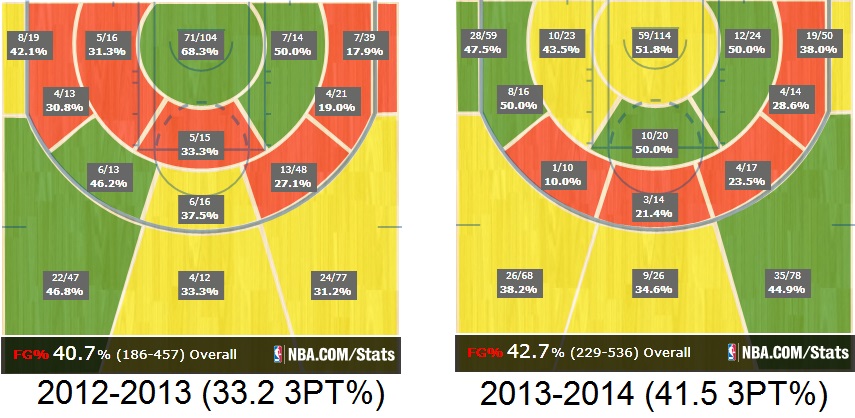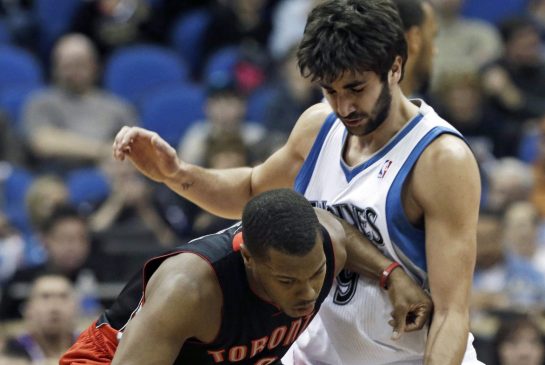A quick look at how Terrence Ross managed to shoot 6-for-8 from deep against the Sacramento Kings.
The Sacramento Kings are not good at playing defense.
They rank 24th in the NBA in defensive efficiency. They allow the 5th most points per game. They allow an above-average number of three-point attempts and they commit the second most fouls per game. Pick your favorite defensive metric — odds are, the Kings rank near the bottom.
Their porous defense was on full display two nights ago. The Raptors scored 99 points — a smidgen over their seasonal average — and posted a sparkling offensive rating of 108.2. In comparison, that mark would rank 5th in the NBA this season.
The problems of the Kings defense cannot be pinned on one player alone. Isiah Thomas tends to gamble for steals, McLemore has all the awareness of a rookie in the NBA and DeMarcus Cousins gets foul-happy when he’s frustrated, but none of them are solely to blame for their defensive shortcomings. Rather, their problem would be best described as a general malaise. It’s a cop-out answer, but it’s apt. The Kings simply lack intensity.
The main beneficiary of the Kings’ malaise was Terrence Ross, who managed to shoot 6-for-8 from deep because the Kings had no answer to one of the most basic actions on a basketball court — screens.
At this current point and time, Ross’ most credible skill on offense is the ability to spot-up from deep. Last season, Ross’ shot was erratic and he wasn’t entirely sure of where to go on offense. This season, Ross has demonstrated increased awareness on offense, and he’s learned how to utilize screens to his favor. He’s leveraged his new-found nuance into better shooting from the field.
Part of Ross’ nuance is the ability to utilize screens, which allows the Raptors to set him up in his favorite spot: the left corner. Ross’ possesses quick foot-speed and works hard to get open. The action is simple, and it usually starts with Ross setting up on the opposite side of the ball. Ross cuts along the baseline, and he tries to get penetration by darting around two screens. Usually, the screeners are whichever bigs happen to be on the court at any given time. The play looks something like this.
Staggering the screens gives Ross the option of throwing different looks at his defender. The defender is forced to choose his fate on the first screen. If he trails baseline, Ross likes to leverage this by spotting up near the break because this forces his defender to run a longer distance. The gif above is one such example. Conversely, if the defender darts on the outside of the first screen, Ross likes to zig into the corner. Again, this forces defenders to run a longer distance, thus affording Ross more space and time.
The Raptors also like to run another more complicated play for Ross. This time, Ross starts on the strongside and moves to the weakside. However, the ball handler tracks his progress, and makes a similar move as Ross. While Ross is cutting baseline, a double pin-down screen is set by the point guard (usually Lowry) and a big. When executed properly, this creates a glut of bodies — each screener and their defender — which forms a pseudo-net for Ross’ defender. If everything goes to plan, the double-screen takes out three defenders, and the ball-handler is able to hit Ross wide-open for a shot.
Teams have clued into Ross’ shooting — people tend to notice 51-point games — and are guarding Ross more tightly, which is why more diligent defensive squads have managed to neutralize Ross’ shooting. However, it’s nice to see Casey and his staff drawing up subtle, but clever plays for Ross to get open, which bodes well for the playoffs. In a seven-game series, teams will figure out the Raptors’ favorite plays, so it’s up to both the players, and the coaching staff to invent counter-attack measures.
Just food for thought.




